Making an Asphalt Plant Invisible (Environmentally)
BY Jerre Blodgett
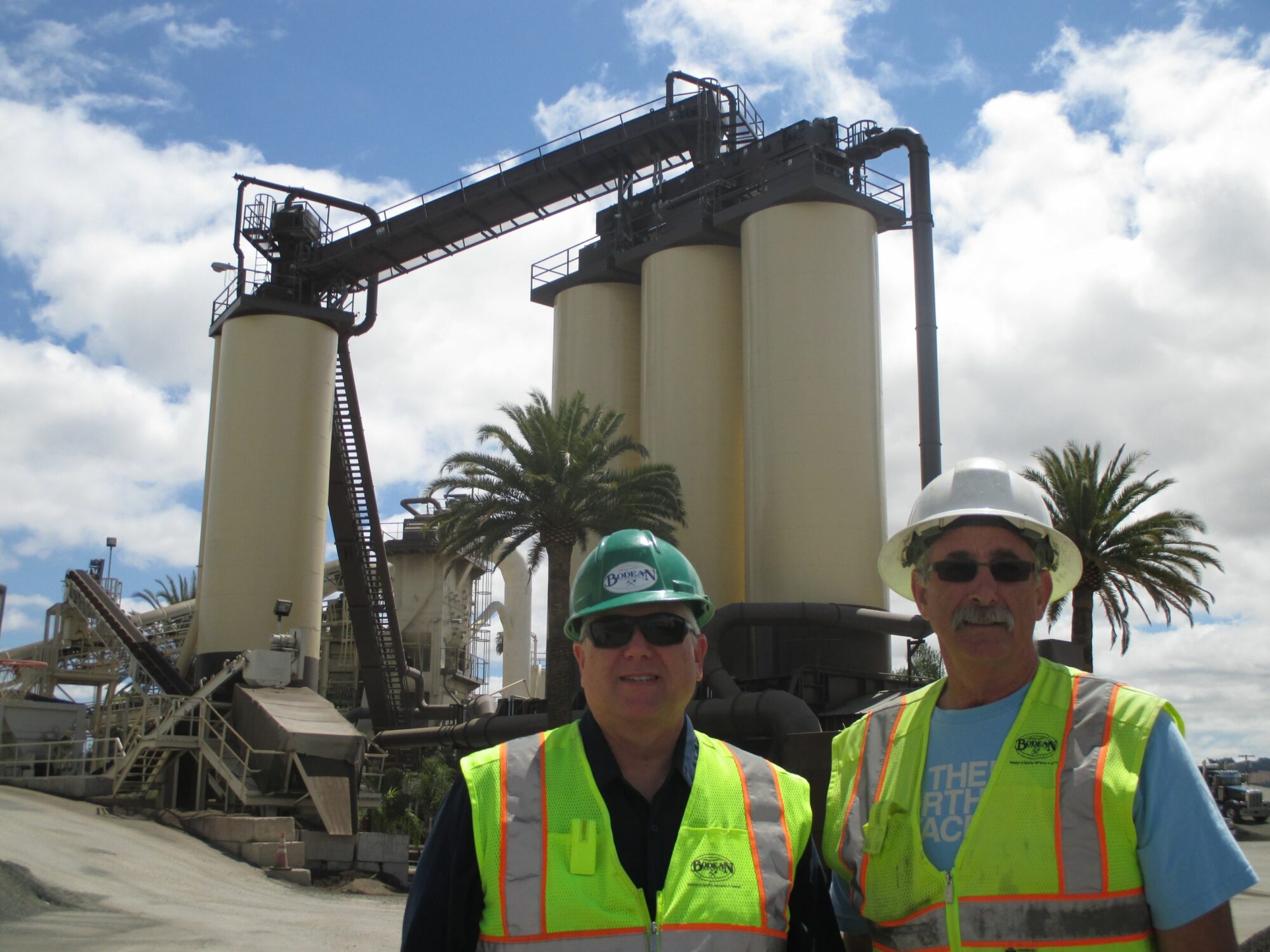
BoDean Company’s goal is to become invisible to the neighbors. Bill Williams is the general manager of BoDean Company, Santa Rosa, California, and while he doesn’t claim to be a magician, his efforts to make the firm’s asphalt operation disappear would impress even master illusionists. He doesn’t work with conjurers’ tricks; he works with innovations that create a smaller environmental footprint for his hot mix asphalt (HMA) plant in urban Santa Rosa.
His mantra is “We’re working to become invisible environmentally,” and it has definitely roused the support of the company’s ownership, management and 40+ employees. He’s also made believers of people within the surrounding community, local government and environmental groups.
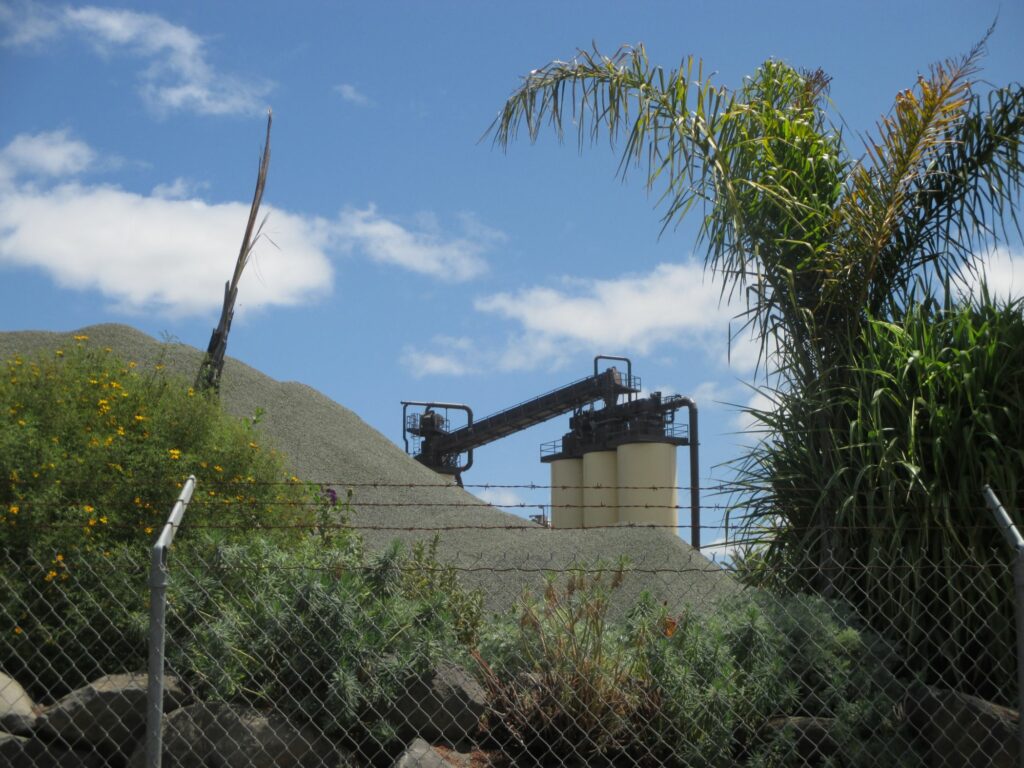
Professional landscaping and placement of the materials storage piles has made the BoDean plant almost disappear from an outsider’s view.
Williams has the full support of owners Belinda (Bo) and Dean Soiland. When Williams joined the company in 2002, he brought with him a devout passion for corporate environmental responsibility. Along with the Soilands, the leadership and consciousness of community-minded “green” thinking and action has rubbed off on the entire organization. The result is a total company commitment to installing innovations and operating the plant in ways that could make invisibility possible. Beautiful landscaping. Absence of odor. Quiet. Waterfalls. Birds nesting in palm trees. What comes to mind is a park.
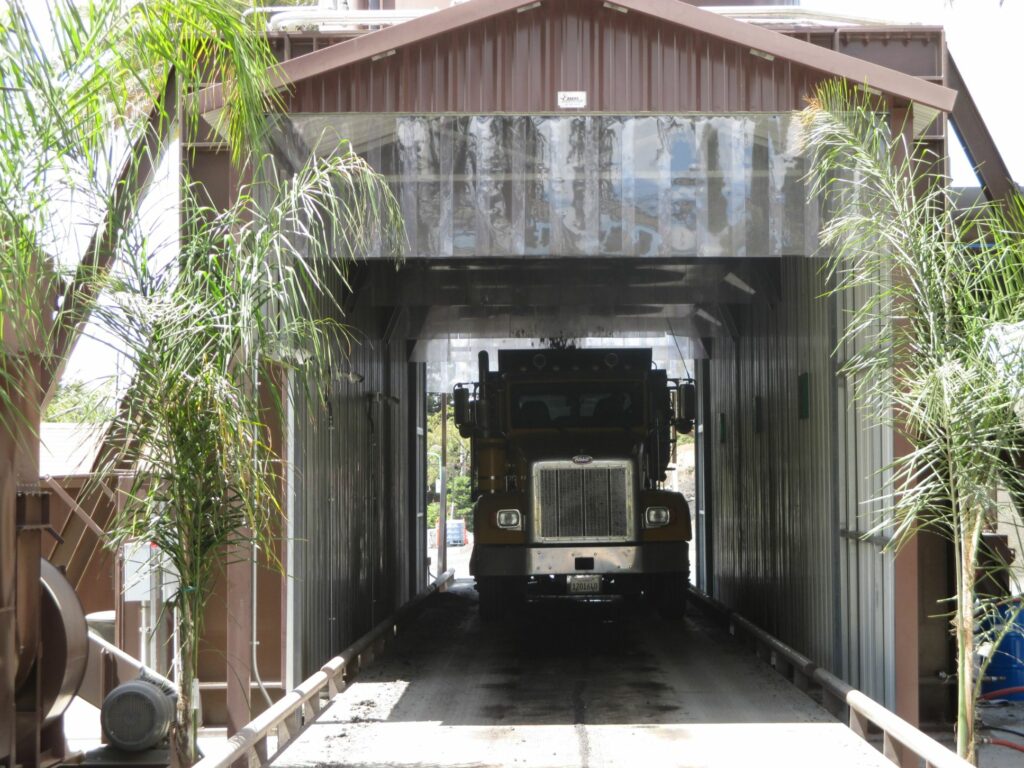
Butler-Justice installed ductwork at truck loadout areas.
History of Becoming Environmentally Friendlier
In 2001, Dean Soiland acquired the operations of this Kaiser/Hanson asphalt plant, which had been operating since the 1960s. This was Dean’s first asphalt venture. His roots are in the sand and gravel mining industry working with his father before acquiring the Mark West Quarry, near Calistoga, California, in 1989. That plant had operated since the early 1900s. At Mark West, he built a wash plant that became highly recognized for being sustainable and environmentally-responsible. He expanded in 1997, acquiring Blue Rock Quarry in Forestville, California.
At BoDean Company, he has taken great pains to beautify, use less energy and be an example of “green” thinking and action. By installing solar energy at the quarry operation, they have reduced the electrical bill by thousands each month. Strategic grading and paving of the asphalt plant’s materials storage area has resulted in drier material that consumes less energy when processed into asphalt. Professional landscaping and placement of the materials storage piles has made their plant almost disappear from an outsider’s view.
Not all improvements came easily. Some required explanation and communication. For example, in 2009, BoDean filed a plan to expand the asphalt plant’s storage capacity by adding three new silos. “This upgrade would ultimately reduce and seek to eliminate the impact on the community by allowing us to store the mixes that we made during the day to reduce nighttime noise associated with production,” Williams explained.
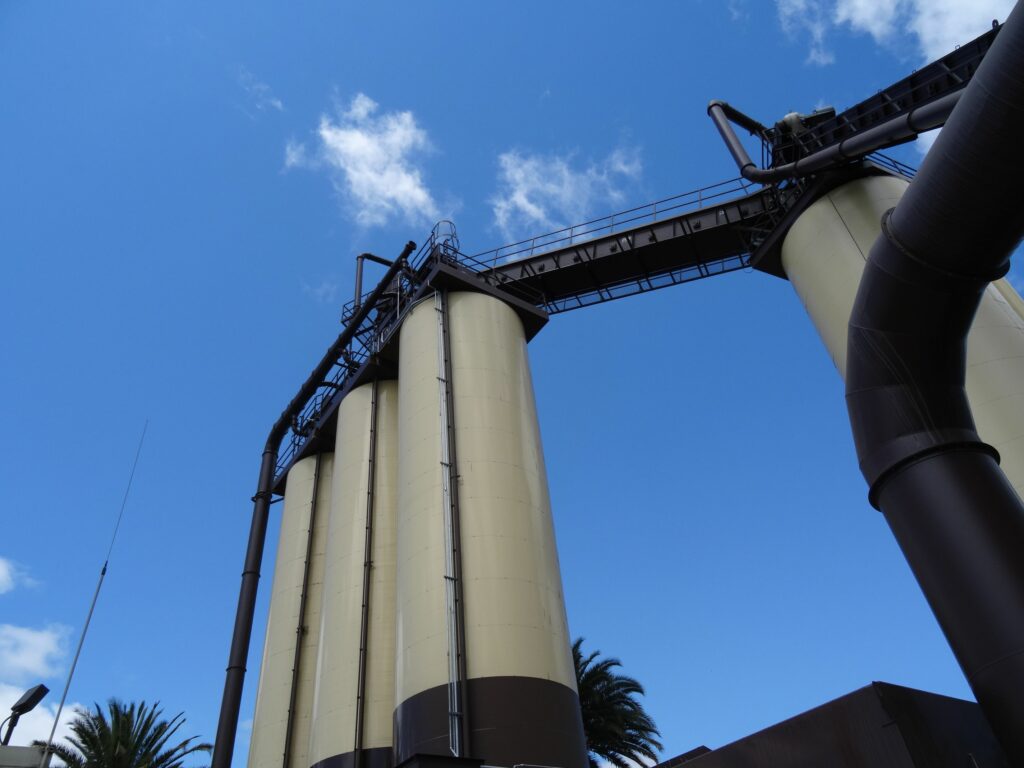
In 2009, BoDean filed a plan to expand the asphalt plant’s storage capacity by adding three new silos. The upgrade allowed them to store the mixes they made during the day, which reduced the noise made at night.
Some local citizens attempted to stop the silo additions, placing BoDean in the center of community and environmental controversy for several years. “There was some confusion about why we were adding silos. They thought more silos meant more production, more pollution and more noise. Some concerned citizens honestly thought that we were intending to increase production,” Williams explained, “which slowed, and complicated, the permitting process.”
After many hearings and back-and-forth discussions, BoDean was able to fully clarify the benefits of the company’s plan to minimize nighttime production through this expansion. BoDean could then go forward with adding the new silos, with newly-imposed limits on production. In addition, the air district required that BoDean install filtration systems to capture and minimize emissions.
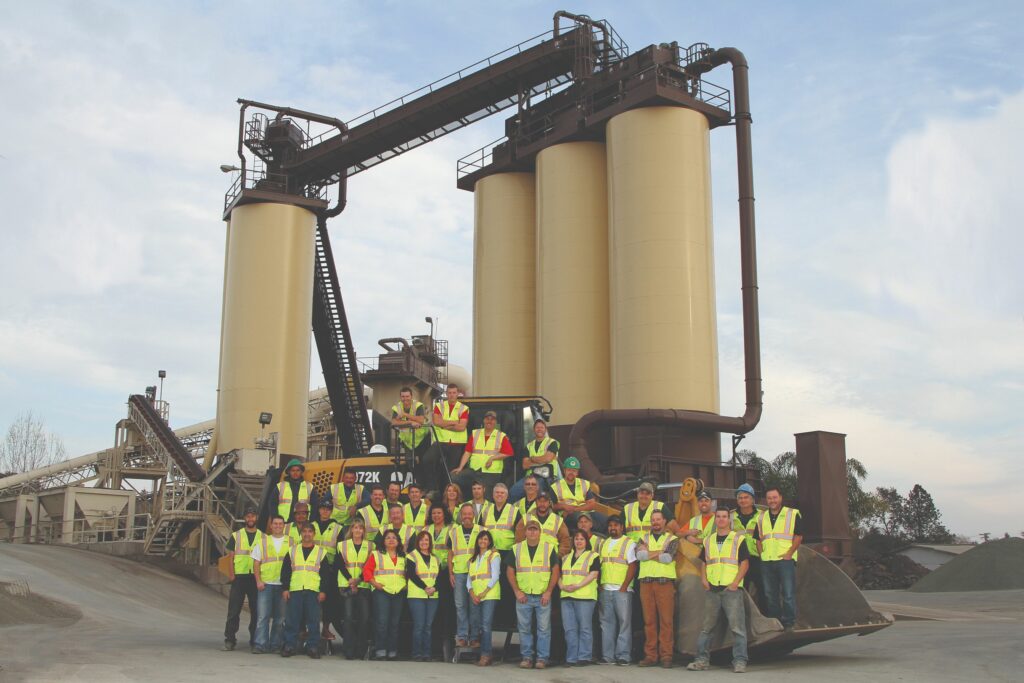
More than 40 employees are part of the commitment to a greener community.
BoDean Company had already recognized that its first and ongoing priority needed to be reaching common ground with the surrounding business, residential and city leaders as well as environmental agencies, and work with their expectations and requirements. According to Williams, “While there are standards, policies and codes mandating specific compliance as a business and environmentally, there are many emotional and personal considerations at play in achieving good neighbor status. We made up our minds that we didn’t just want to comply. We wanted to be active, concerned participants in this community. While tackling these issues has been difficult and expensive, it made our entire company better at understanding and doing what we had to do to be a positive contributor to our community and to our planet—today and 50 years from now.”
The company achieved a core advance toward a smaller environmental impact with the use of emissions-capturing and filtering technology that was designed, engineered and installed by the Blue Smoke Control Division of Butler-Justice Inc., headquartered in Anaheim, California. The Blue Smoke Control Division applies its patented technology to remove blue smoke emissions generated in BoDean’s production.
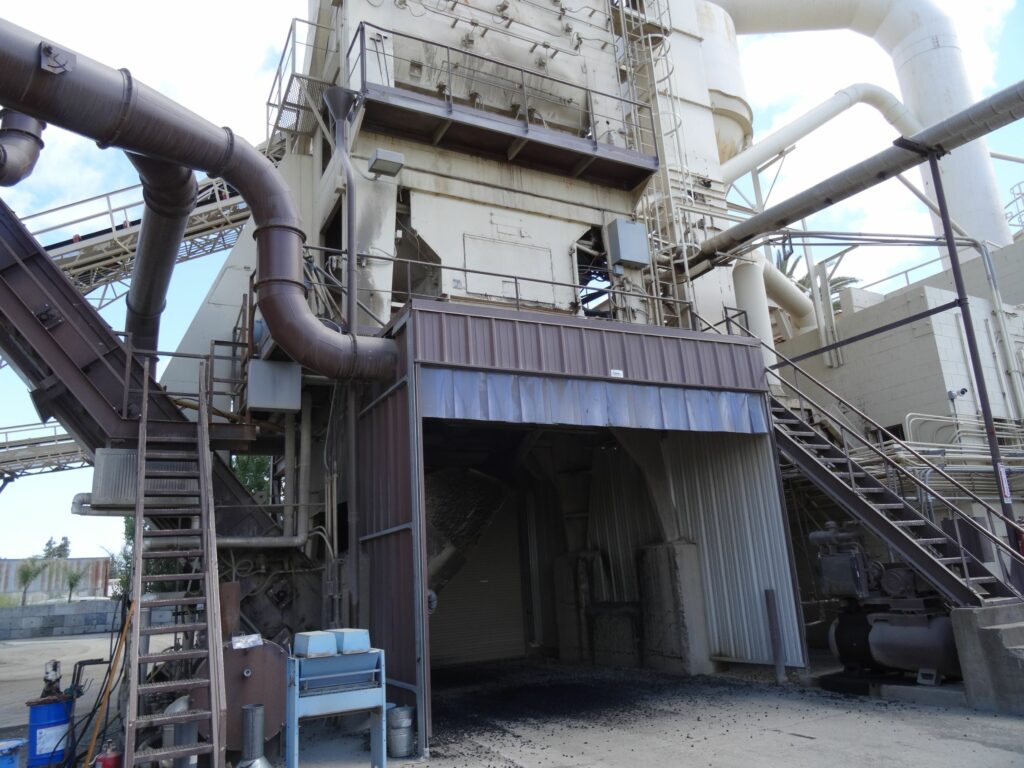
Butler-Justice installed ductwork at the top of the silos, at drag slat conveyor transfer points and at truck loadout areas. These are the key points required to assure that only clean air leaves the plant.
According to Mike Butler, president of Butler-Justice, the Blue Smoke Control System can remove up to 99.9 percent of the suspended droplets that constitute the blue haze associated with high temperatures in the asphalt production process. Butler explained that by removing blue smoke, the system also reduces the odor associated with asphalt production.
“We worked extremely hard on a uniquely engineered design at BoDean to provide the highest standards of asphalt pollution control while achieving a reasonable initial investment cost and economical operational and maintenance expenses,” Butler said.
BoDean uses two blue smoke collection units coupled with a ducting system installed throughout its plant. The batch plant is controlled by the Blue Smoke Control Model 6-S12-C 24,000 cfm collector. The four 300-ton silos are vented to a Model 6-S20-C 40,000 cfm collector. Ducting was installed by Butler-Justice at the top of the silos, at drag slat conveyor transfer points and at truck loadout areas. These are the key points required to assure that only clean air leaves the plant. The ducting feeds two collectors that process the air until it is virtually 100 percent clean of blue smoke haze.
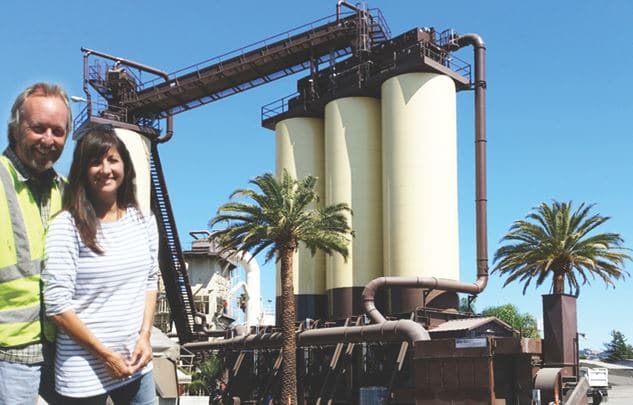
Belinda and Dean Soiland are the proud owners of BoDean Company, Santa Rosa, Calif.
Each collector features seven stages of filtration, with the final high-efficiency filter being 95 percent efficient at capturing particles as small as 0.3 microns (equivalent to HEPA quality). Because blue smoke is a vapor at high temperatures, Butler-Justice engineered BoDean’s ducting systems to incorporate the infusion of ambient air at key points. This helps the blue smoke particles “coalesce” into larger droplets that are then filtered out by the blue smoke collector. The collected effluent is drained from the filters incorporating a combination of gravity and a sump. Filters are serviced on a periodic basis in accordance with manufacturer’s recommendations.
According to Butler, “The final filter is 95 percent efficient at 0.3 microns, which is over 30 times more efficient than the Air District’s requirement to control emissions of particulate smaller than 10 microns.”
Williams explained, “We knew we had to find a way to filter and collect the emissions…as part of our plan to become environmentally invisible. We’re not fully there yet, but you can see the investment paying off in every aspect of the plant. Employees are eager to show off where they work and what they are doing to beautify the area and operate a clean plant…our efforts have resulted in greater employee satisfaction and retention.”
